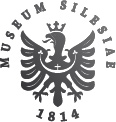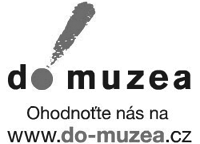Slezský sborník
rok 2019
ročník 117
číslo 1
OBSAH / CONTENTS
STUDIE / ARTICLES
Janusz SPYRA: Fetysz początku a nowożytna historiografia klasztorna. Przypadek benedyktynów w Orłowej oraz dominikanów v Cieszynie
s. 5–21
In their research, historians repeatedly use information that was recorded in the works of their predecessors, assuming that they could have had access to sources that have been destroyed. In the case of religious historiography, it is also assumed that there is a credible tradition within individual congregations. For this reason, authors often feel exempted from the obligation to carefully verify information that was passed on. This is the case of the Benedictine monasteries in Orłowa and the Dominican monasteries in Cieszyn, which some historians accept, as earlier authors, that they were founded in 1211 and 1225, respectively. In fact, such early dates of the foundation of both institutions are the work of religious historiography from the eighteenth century, which is shown in the article on the basis of an analysis of sources and historical context.
Marie GAWRECKÁ: „Kam s ní?" Snahy o zřízení nové německé univerzity v předlitavské části habsburské monarchie v poslanecké sněmovně říšské rady v letech 1872–1875
s. 23–41
The study is a partial contribution to understanding the development of university education in Cisleithania in the 1860s and 1870s. Despite the qualitative changes that universities underwent in the 1860s, including the increase in the number of students, there was no increase in the number of university institutions, but, on the contrary, their number decreased in the Cisleithanian part of the monarchy. The first part of the study deals with the efforts of some crown lands and cities to establish a new German university, which culminated at the end of this decennium in connection with the polonization of Lviv University. The second part focuses on the discussions centred on the application for the establishment of a new university held in the House of Deputies of the Imperial Council between 1872 and 1874. It outlines the views and arguments of national parliamentarians on the issue of the establishment of a new university and its future location, as well as the final justification of the government's decision to establish it in Chernivtsi, Bukovina.
Ivana KOLÁŘOVÁ: Bezpečnostně-politické poměry na Frývaldovsku v letech 1918–1938 očima pořádkového aparátu
s. 43–70
The study focuses on gendarmerie activities in the border region with a predominance of German settlements. The research is based on the agenda of the security forces at the state and national level, it also uses the agenda of the local authorities and local governments, as well as the press from that period. Attention is focused on organizational development and staffing of law enforcement units, as well as on changes in the security-political situation in the region in relation to the wider economic and social development.
Lubomír HLAVIENKA: První období existence závodních rad. Květen až říjen 1945
s. 71–85
The study focuses on the process of creation of so-called Factory Councils, elected bodies of workers, that spontaneously took control over industrial plants in Czechoslovakia at the end of the Second World War. The relations of Factory Councils to the owners and to „traditional" trade unions are examined.
Jiří KNAPÍK: Amatérské divadlo v Opavě 1945–1955
s. 87–105
The study presented deals with the restoration of amateur theatre and puppet companies in Opava and the region of Opava after World War II. The theme is addressed in the context of the cultural policy of the people's democracy of post-war Czechoslovakia and the beginnings of the communist regime after 1948; the emphasis is therefore placed on the institutional background of amateur theatre (state administration, associations, mass organizations), the social function of theatre performances and the transformation of theatre ensembles into a new system of cultural activities management according to the Soviet model at the turn of the 1940s and 1950s.
Dimitris ATANASIADIS – Zdeněk JIRÁSEK: Místo kultury ve vývoji řecké minority v českých zemích (s ohledem na vývoj v regionu Jesenicka)
s. 107–120
The study deals with mapping the development of the Greek national minority in the territory of the present Czech Republic from the late 1940s to the present. Attention is, however, primarily focused on its cultural manifestations, which have become characteristic features for the distinctive identification of this ethnic entity and, throughout its existence, they have represented the basic unifying element of this population group. This happened both at the time when the Greeks in Czechoslovakia had the largest quantitative representation - about 12,000 people in the 1950s, and even these days when it is a much sparser population (about 3,000 people). It is therefore evident that living culture, in addition to the awareness of traditions, represents the strongest identification link for the national minority in question.
At the same time, the authors point out that although it is not a very large ethnic group today, the position of the Greeks in the national structure of the Czech Republic is absolutely unmistakable. The most intense cultural activity is performed by them today (but to a large extent also in the past) in the territory of the Czech Silesia and northern Moravia (the regions of Jeseník, Krnov and Ostrava). According to their characteristics, the Greeks still represent the type of a "new national minority", although they have been resident in the Czech territory for more than 80 years. Simultaneously, they are characterized by an extraordinary openness to the Czech dominant ethnic environment. Thus, although in many cases they appear to be totally assimilated, their specific cultural expressions are a distinctive distinguishing feature and, at certain moments, they are also reflected in the specific lifestyle features of the local Greek families.
Recenze a zprávy o literatuře / Reviews and Brief Notices (s. 121–129)
Ed. Martin NODL, Středověká univerzitní vzdělanost (Michael Lužný – Blanka Zilynská); Jan KOUBA, Slovník staročeských hymnografů (13. – 18. století) (Jakub Ivánek); Halina DUDAŁA – Beata GAJ, Łacińskie epigramy Ks. Gotfryda Karola Eichbergera z Bojszów (David Pindur); Ivo CERMAN a kol., Střední Čechy 1918/2018. Průvodce historií (Jiří Knapík).
Kronika / Chronicle (s. 131–135)
Všichni, kdož jste je znali, vzpomeňte na ně... K úmrtí Jaromíra Breuera a Michala Salomonoviče (Kamila Poláková); Hana Podešvová-Dymerová (k třicátému výročí úmrtí) (Pavel Šopák).
Poslední aktualizace článku: 12.02.2020
Vytisknout celý článek







